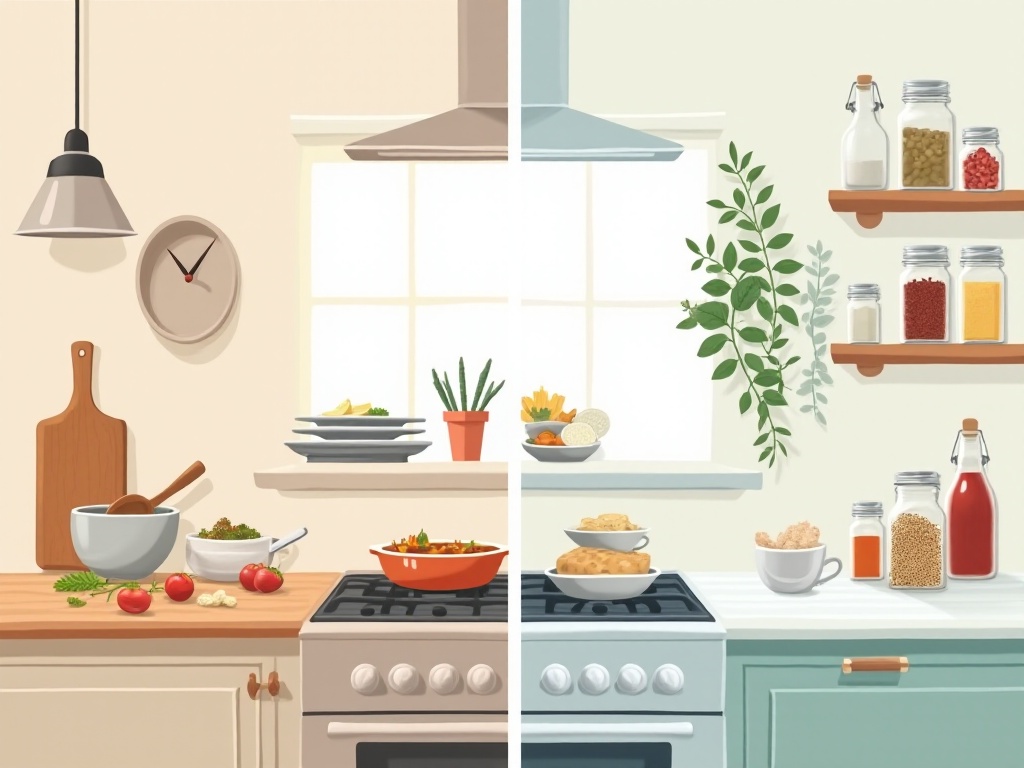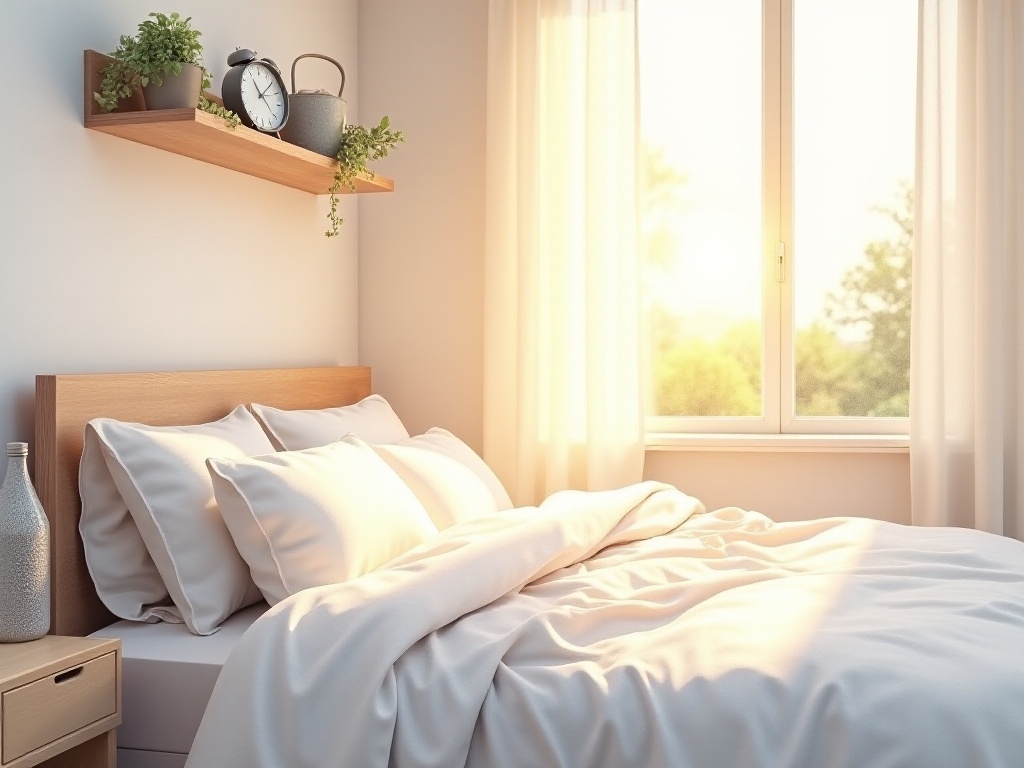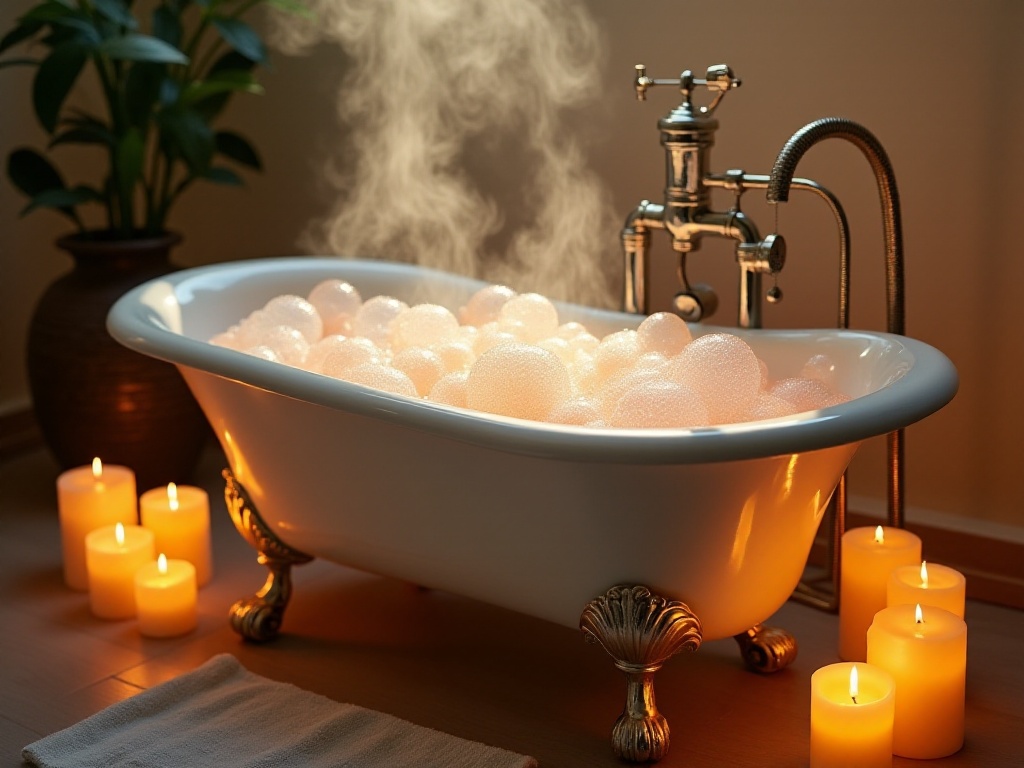Preface
As someone born after 1995, I deeply understand the importance of home organization and storage. I remember when I first started working, my tiny room of just over 100 square feet was filled with clutter, making it depressing to come home. Three years ago, I decided to completely change this situation and began systematically studying organization methods. Now, I've finally found a storage solution that suits both young people's lifestyles and Chinese living habits.
The Art of Letting Go
When it comes to the first step of organization, we must discuss "letting go." I clearly remember impulsively buying a bunch of storage items on Taobao right after getting paid, only to find they were useless. Later, I realized that before starting organization, the most important thing is to first let go of unnecessary items.
After countless attempts and improvements, I developed a super practical "Three-Box Rule." Here's how it works: prepare three large boxes labeled "Discard," "Donate," and "Consider." For each item, I ask myself two questions: Have I used this in the past year? Will I likely use it in the coming year? If both answers are no, I must be ruthless and put it in either the "Discard" or "Donate" box.
The results of this method are truly amazing. In my first attempt, I cleared out two large bags of clothes just from my wardrobe. Some clothes I had forgotten I bought, while others were impulse purchases I never wore. Statistics show this method typically reduces items by 30-40%, possibly higher among young people due to our tendency for impulse buying.
I particularly want to emphasize not to overthink during this process. Many young people fall into the trap of "I might need this later." Actually, rather than keeping things that take up space, it's better to deal with them decisively. If you really need something, you can always buy it again, especially with online shopping being so convenient.

Fixed Location Storage
After decluttering, the next step is finding dedicated spots for all items. This is especially important for young people because our fast-paced lifestyles make it easy to lose things if they're scattered everywhere.
My experience shows that what matters most isn't where items are placed, but keeping their locations consistent. Take my remote control - I gave it a home in the right drawer of my coffee table, and I never have to search for it anymore. This is a lifesaver for young people who often work late, as they don't have to worry about being late because they can't find things the next day.
Here's a particularly useful tip - initially mark item locations with sticky notes. For example, I'll label drawers with "Remote" or "Charger." Once habits are formed after some time, remove the labels. Using this method, I not only established organization habits for myself but also helped my roommate break the habit of randomly placing things.
Moreover, this fixed location storage method is particularly suitable for young people sharing apartments with roommates. Everyone can discuss and clearly divide areas for their belongings, preventing both misuse of each other's items and unnecessary conflicts.
Zone-Based Storage
When it comes to space planning, I believe home spaces should be like urban planning, requiring clear functional zones. After repeated trials, I divided my living space into several main functional areas including living, work, and storage zones, each with its relatively independent storage system.
Taking my living room as an example, here's how I planned it: next to the sofa is a leisure zone with a small cabinet specifically for books and magazines and other easily accessible reading materials; the TV cabinet area is the entertainment zone, mainly storing gaming consoles, game discs, Blu-ray players and other digital products; under the coffee table is the living zone, storing daily necessities like remotes, tissues, and commonly used chargers.
This zone-based storage method is particularly suitable for young people who like to work or study at home. For instance, I designated a specific work area at home containing various office supplies and study materials. This way, I can quickly find what I need when working, naturally improving work efficiency.
Additionally, I've noticed many young people have a habit of stockpiling, especially with online shopping. For this situation, I suggest designating a specific storage zone at home for storing backup items and seasonal items. This not only keeps the home looking neater but also helps track inventory and avoid duplicate purchases.

Clever Use of Space
Regarding space utilization, this might be a major concern for many young people, especially those working in first-tier cities where rental units are typically small. However, after years of exploration, I've found that many people who feel they don't have enough space actually haven't fully utilized vertical space.
In my case, I installed many wall shelves, which increased space utilization by at least 50%. There are many drill-free storage racks available now, which are particularly friendly for renters. Places that are easily overlooked, like behind doors and tops of cabinets, are actually great storage helpers.
I have a particularly practical design in my room - a floating shelf installed at the headboard, eliminating the need for a bedside table. The space under the bed is also a key utilization area - I bought several flat storage boxes with wheels that can be easily pushed and pulled, used for storing seasonal clothing and infrequently used items.
For small spaces, choosing appropriate furniture is also important. I recommend selecting multifunctional furniture, such as sofas and beds with storage functions. My sofa has storage space that can hold many things while looking completely normal from the outside.

Daily Maintenance
After establishing a storage system, the key is maintaining it. As an office worker who often works overtime, I deeply understand the importance of time management. Therefore, I developed a simple but effective maintenance plan.
I spend 10 minutes before bed putting away items used during the day. This habit has now completely integrated into my daily life, as natural as brushing teeth and washing my face. On weekends, I spend half an hour checking the overall storage situation to see if anything needs adjustment. Every quarter, I do a major cleanup, which helps maintain a healthy cycle of items at home.
This maintenance plan might seem troublesome, but it's actually not difficult to execute. The key is forming habits - just like scrolling through short videos daily, once it becomes a habit, it happens naturally. Plus, the sense of achievement when you see a neat and orderly living environment is really great.

Storage Misconceptions
Regarding storage misconceptions, I think it's necessary to share some pitfalls I fell into. As a perfectionist, my biggest misconception was pursuing the "perfect" storage solution. I always felt my home needed to look like magazine photos, which often led to frustration when I couldn't achieve the ideal effect.
Later I understood that the ultimate goal of storage is to make life more convenient, not to create a showroom. Especially for us young people who are already tired from work and study, home should prioritize comfort and relaxation.
Another misconception is blindly pursuing minimalism. While organization requires letting go, this doesn't mean throwing away everything that isn't frequently used. Items with sentimental value like photo albums and mementos can be kept as long as they don't take up too much space. After all, home isn't just a living space, but also a place that holds memories.
I also encountered a common misconception of over-relying on storage products. I remember going through a phase where I was obsessed with various storage products, buying anything that looked good, only to find many weren't practical. Now my advice is to first clarify your needs, then purchase storage items accordingly.

Summary of Insights
After three years of practice, I deeply understand that a good storage system should be both practical and relaxed - don't put too much pressure on yourself. Organization isn't something achieved overnight, but rather a lifestyle attitude that requires continuous input.
Especially for us young people, finding balance between work and life is already challenging enough, so there's no need to set too many rules for ourselves. Finding what works for you and gradually practicing and improving in daily life is the correct approach.
Practical Q&A
Seeing many young friends asking specific storage questions in the comments, I've selected several typical cases to answer in detail:
Regarding clothing storage, I recommend using the "three-layer method." The outer layer contains frequently worn current season clothes, the middle layer holds seasonal transition clothes, and the innermost layer stores special occasion clothes. This classification makes daily access very convenient. This method is particularly suitable for young people with lots of clothes, helping maintain a neat and orderly closet.
For friends living in small rental units, increasing storage space is a common concern. I suggest fully utilizing vertical space - installing wall shelves, using under-bed storage boxes, and utilizing cabinet tops. My 60-square-meter apartment created lots of extra storage space this way. Also, when choosing furniture, pay attention to practicality and try to select pieces with storage functions.
Many people ask about choosing storage items. My advice is don't rush to buy storage products - wait until you've determined what needs to be stored, then purchase based on actual needs. I learned this lesson the hard way, initially buying many storage boxes that ended up unused, wasting money. With online shopping being so convenient now, you can always buy when needed.
Action Suggestions
If you want to start improving your home storage situation, I suggest starting with these three steps:
First, choose the area that bothers you most, like your desk or wardrobe, and thoroughly clean it using the "Three-Box Rule." Don't try to organize all areas at once, as that easily leads to giving up halfway.
Second, find fixed storage locations for kept items and consistently return used items to their original places. This stage might feel troublesome, but persistence shows great results.
Third, maintain this state for a week and observe the results. If it works well, gradually expand to other areas. If you find something unsuitable, adjust accordingly.
Remember, organization is a gradual process - don't expect to solve all problems at once. The most important thing is to start acting, continuously adjust and improve through practice, and find what works best for you.
I believe through these methods, you can also create a clean and tidy living environment. If you encounter any problems during implementation or have good suggestions, feel free to discuss in the comments. Next time I'll share more practical kitchen storage tips, so remember to follow for updates.








